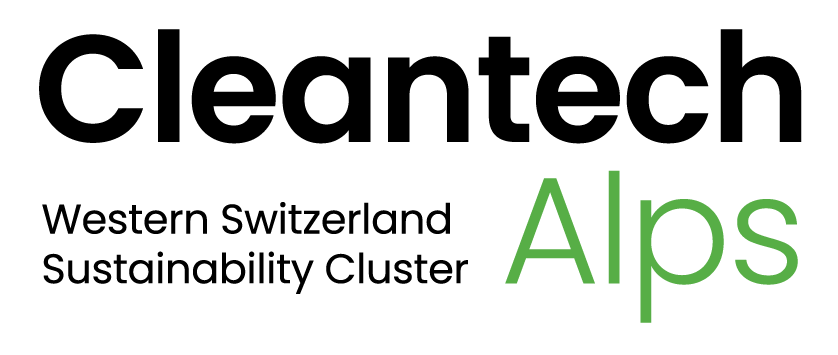Gaiasens is an innovative environment-oriented company that provides real-time measurement tools, environmental modelling services and operational solutions for natural hazard management. Used to working at altitude and in extreme environments, the team at Gaiasens are dedicated to helping their customers monitor hazardous areas by providing tailor-made measurement stations. The company uses tried and tested cutting-edge technological solutions for real-time data acquisition and visualisation.
This Valais-based company was born out of the laboratories at Lausanne’s EPFL technology institute in 2008. Then a post-doctoral research scientist at EPFL’s Laboratory of Environmental Fluid Mechanics and Hydrology (EFLUM), Olivier Couach won a CHF 100,000 innovation prize for his work in modelling the physics and chemistry of the atmosphere. He put the money into automating a three-day air pollution forecasting chain at different levels, from Europe-wide cover (with 50-km precision) down to individual towns and cities (with 1-km precision). This led to the first projects developing operational solutions for weather and air-quality forecasting.
At the same time, using the experience he had gained on the Swiss Experiment project, the young research scientist began working with two engineer colleagues, Thierry Bertholet and Patrick Porchet, to develop new low-energy measurement systems. Designed to transmit data in real time, these stations are easy to set up and resistant to extreme temperatures. “With the experience gained from our work on the Plaine Morte glacier and in the mountains of Valais, we developed measurement solutions for use in weather, avalanche, geological, visual and environmental monitoring, technology that we’ve been continually improving for more than 10 years now,” says Olivier Couach.
State-of-the-art technology designed to anticipate and minimise mountain hazards
To help its customers monitor hazardous areas, Gaiasens installs its own measurement stations and still cameras. Access to the data generated is provided in real time via a web interface. All the data is stored and processed on the company’s servers in Valais. The web interface provides visual information for the period required, displaying in graph form the change in the measured parameters for each type of hazard being monitored (avalanche, cliff erosion, debris flow and glacier hazards), making this platform an excellent and very accurate decision-support tool. The system can also be set to send e-mail and SMS alerts if required.
Gaiasens’ products are of interest to a wide variety of customers including municipal and cantonal councils, hydropower companies, ski resorts and environmental engineering firms. What makes the company’s technology stand out is that it is capable of operating in extreme environments while remaining energy-self-sufficient and transmitting data in real time.
This technology has been used in alpine hazard management in both winter and summer for several years already. The measurement stations are designed to work faultlessly in mountainous areas, with Gaiasens continually improving their performance. Measurements can be made both locally (snow depth, wind gust speed, etc.) and remotely, using the station’s motion detector and still camera. “At the moment we are essentially operating in Switzerland, but we do have a few projects across the border in France,” says Olivier Couach.
Fog station and natural hazards interface: innovative projects that have built Gaiasens’ reputation
A specific example of the technology developed by Gaiasens is the fog station it has installed for the energy company Forces Motrices Valaisannes (FMV). This station has a present-weather sensor that determines the air’s water content and visibility in metres, which makes it able to monitor the formation of fog. The station has a local power supply to heat the sensor and the data is transmitted by a 4G modem. A custom interface was designed to enable the customer to view the measurements in real time, record the number of foggy days, save the data and produce quarterly analysis reports.
Working with organisations responsible for monitoring natural hazards, Gaiasens has also developed a natural hazards interface. Prized for its clarity and providing a comprehensive overview of the data at a glance, this interface has been in use for around a decade. Different functions have been added over time to send more detailed information to the user. Through the interface, users can quickly find all of the measurements recorded by the station, from the time it was installed to the present. It also displays the snow report, which is calculated daily at 5am. The snow report is regularly archived so that it can be consulted at any time.
What next for Gaiasens?
Now that Gaiasens has made sufficient progress with the quality of the parameters transmitted from its measurement stations, the team are currently focusing on developing a program to enable detailed analysis of the images transmitted. The aim of this is twofold: to detect areas of movement and to enable the transmitted photo to trigger alerts. “We’re continually working on the core element of our stations, in other words the program that manages the sensors and data acquisition, along with data transmission,” says Olivier Couach. Every member of the team in Martigny is intent on improving the quality of their measurement stations.
In terms of sustainability, Gaiasens is also up to scratch. Since the beginning, the team have worked hard to build sustainable measurement systems, providing regular maintenance to make sure that the stations have a long operating life and ensuring that the materials used are recyclable. “Once the critical monitoring period is over, we remove our stations without leaving any trace of them and they are then re-used on other measurement sites,” concludes Olivier Couach. By combining sustainability and progress, Gaiasens can look to the future with quiet confidence.

